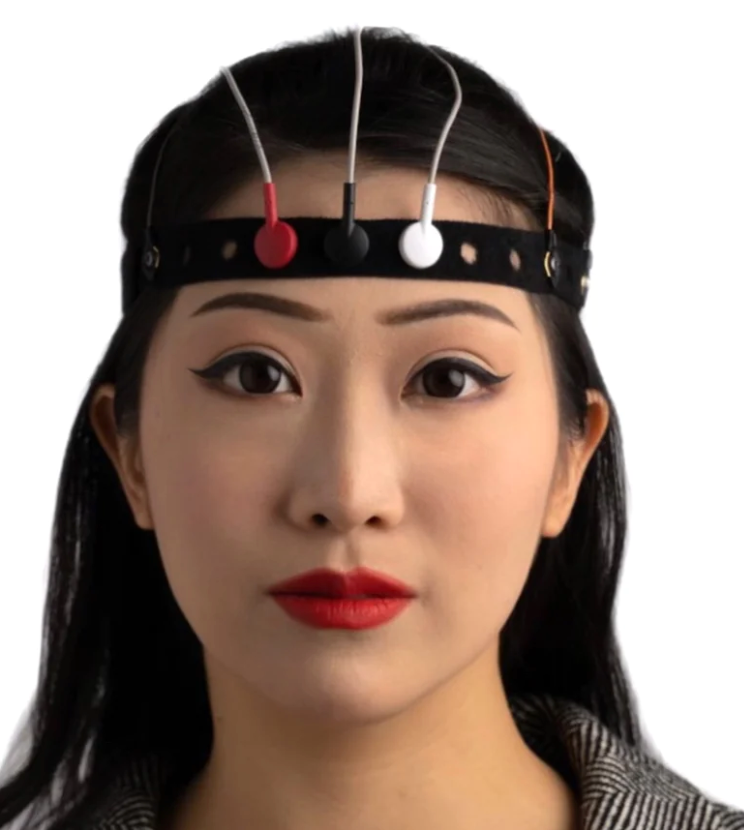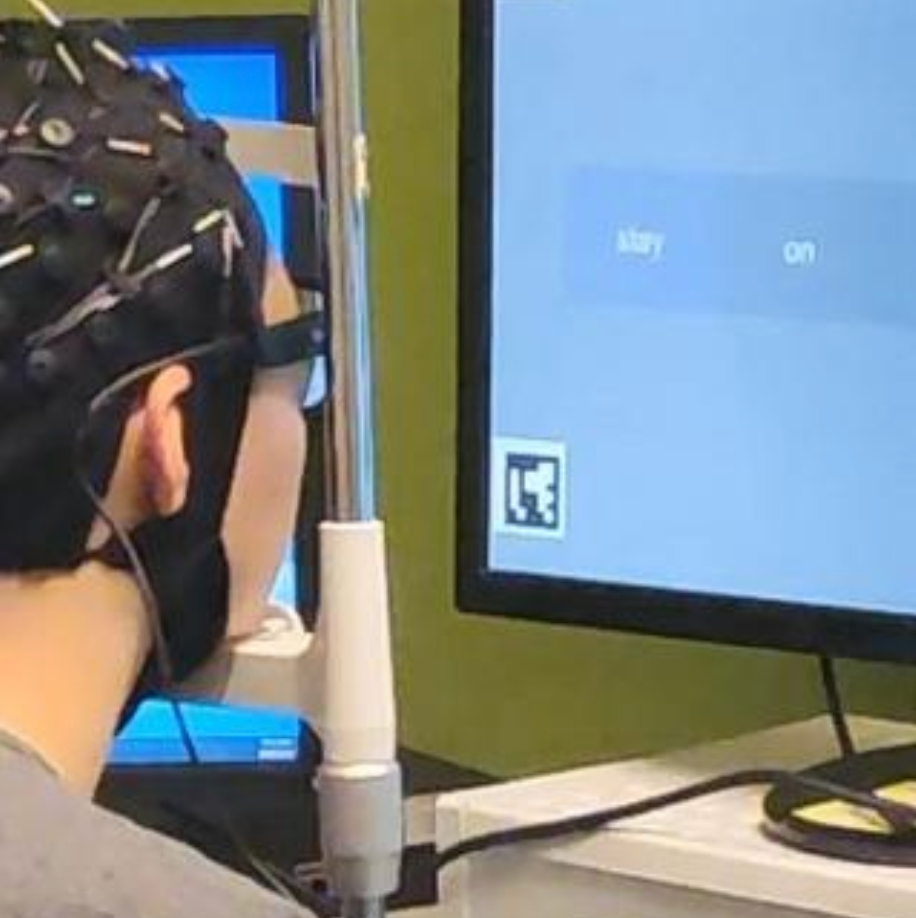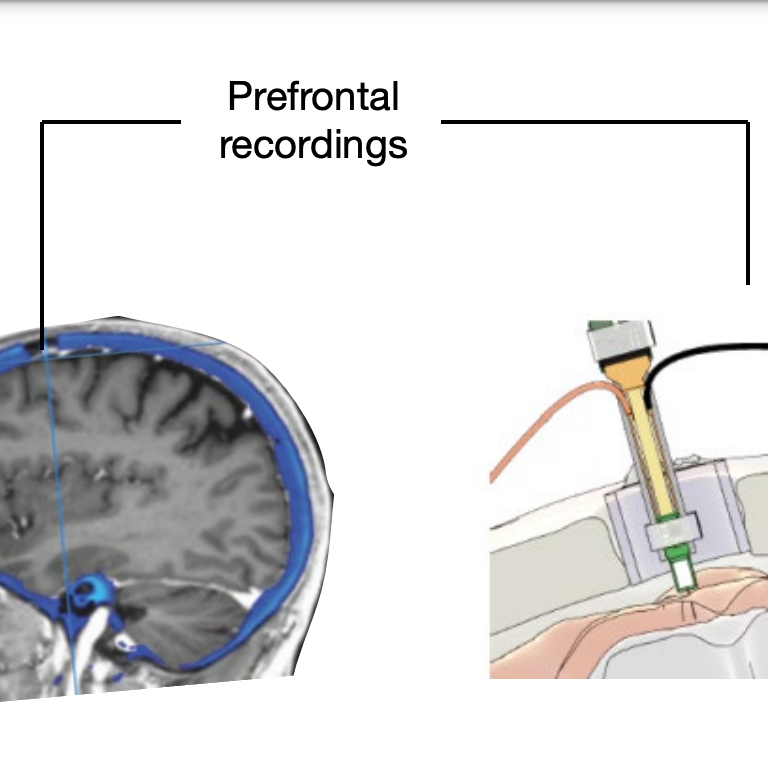Discovery could improve learning speed by tuning into your brainwaves
Feb. 01, 2023.
4 min. read
11 Interactions
RELATED NEWS
Delivering information at the natural tempo of your neural pulses could accelerate your ability to learn, University of Cambridge neuroscientists have discovered.
They used EEG brain sensors attached to the head to measure participants’ alpha brain waves (8 to 13 Hz). The researchers then used these readings to create a 1.5-second optical “pulse”: a white square flickering on a dark background at the same tempo as each person’s individual alpha waves.
The mid-range of the brainwave spectrum, the alpha frequency range, tends to dominate when we are awake and relaxed.
Three times faster in a cognitive task
Participants who received this visual cue (or “entrainment”) at their personal brainwave frequency were at least three times faster in improving at a cognitive task (trying to identify specific shapes within a barrage of visual clutter). The improvement persisted the next day.
Priming brains for optimal rhythms could help us remain quick learners (with “neuroplasticity”) throughout life, help people with learning difficulties, and give professionals an edge in training simulations, the neuroscientists suggest.

(credit: OpenBCI)
Their study used complex EEG machines, but there are simple headband systems that could allow you to measure brain frequencies quite easily, say the researchers. As Tim Cook would say, “We can’t wait to see what you’ll discover!”
Meanwhile, the findings will be explored as part of the Centre for Lifelong Learning and Individualised Cognition: a research collaboration between Cambridge and Nanyang Technological University (NTU), Singapore.
How it works
A brainwave cycle consists of a peak and trough. Some participants received pulses matching the peak of their waves, some the trough, while some got rhythms that were either random or at the wrong rate (a little faster or slower). Each participant repeated over 800 variations of the cognitive task, and the neuroscientists measured how quickly people improved.
When participants returned the next day to complete another round of tasks, those who learned much faster under entrainment had maintained their higher performance level.
“It was exciting to uncover the specific conditions you need to get this impressive boost in learning,” said first author Dr. Elizabeth Michael, now at Cambridge’s Cognition and Brain Sciences Unit. “The intervention itself is very simple, just a brief flicker on a screen, but when we hit the right frequency plus the right phase alignment, it seems to have a strong and lasting effect.”
Importantly, entrainment pulses need to synch with the trough of a brainwave. Scientists believe this is the point in a cycle when neurons are in a state of “high receptivity.”
Wide range of potential uses
“We are tapping into a mechanism that allows our brain to align to temporal stimuli in our environment, especially communicative cues like speech, gaze and gesture that are naturally exchanged during interactions between parents and babies,” said aid co-author Prof Victoria Leong, from NTU and Cambridge’s Department of Paediatrics.
“When adults speak to young children they adopt child-directed speech – a slow and exaggerated form of speaking. This study suggests that child-directed speech may be a spontaneous way of rate-matching and entraining the slower brainwaves of children to support learning.”
The researchers note that while the new study tested visual perception, these mechanisms are likely to be “domain general,” applying to a wide range of tasks and situations, including auditory learning. Other early applications of brainwave entrainment to boost learning could involve training in professions where fast learning and quick decision-making is vital, such as pilots or surgeons.
“Our brain’s plasticity is the ability to restructure and learn new things, continually building on previous patterns of neuronal interactions. By harnessing brainwave rhythms, it may be possible to enhance flexible learning across the lifespan, from infancy to older adulthood,” Kourtzi said.
The findings, published in the journal Cerebral Cortex, will be explored as part of the Centre for Lifelong Learning and Individualised Cognition, a research collaboration between Cambridge and Nanyang Technological University (NTU), Singapore.
“We feel as if we constantly attend to the world, but in fact our brains take rapid snapshots and then our neurons communicate with each other to string the information together,” said co-author Prof Victoria Leong, from NTU and Cambridge’s Department of Paediatrics.
“Our hypothesis is that by matching information delivery to the optimal phase of a brainwave, we maximize information capture because this is when our neurons are at the height of excitability.”
Starts with mother/baby communication
Previous work from Leong’s Baby-LINC lab shows that brainwaves of mothers and babies will synchronize when they communicate. Leong believes the mechanism in this latest study is so effective because it mirrors the way we learn as infants.
“We are tapping into a mechanism that allows our brain to align to temporal stimuli in our environment, especially communicative cues like speech, gaze and gesture that are naturally exchanged during interactions between parents and babies,” said Leong.
“When adults speak to young children they adopt child-directed speech — a slow and exaggerated form of speaking. This study suggests that child-directed speech may be a spontaneous way of rate-matching and entraining the slower brainwaves of children to support learning.”
Let us know your thoughts! Sign up for a Mindplex account now, join our Telegram, or follow us on Twitter.

.png)

.png)


.png)









0 Comments
0 thoughts on “Discovery could improve learning speed by tuning into your brainwaves”